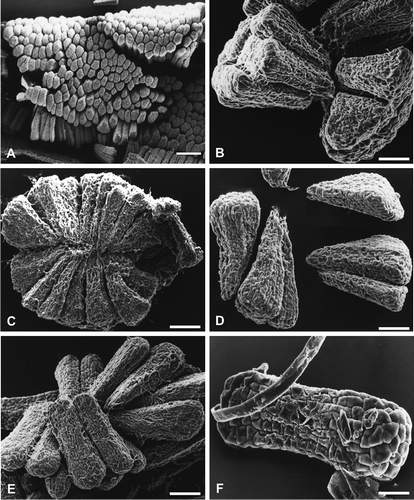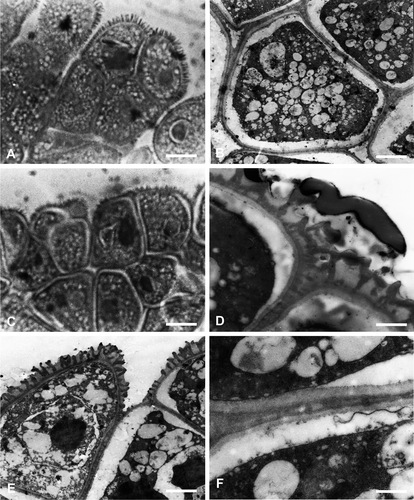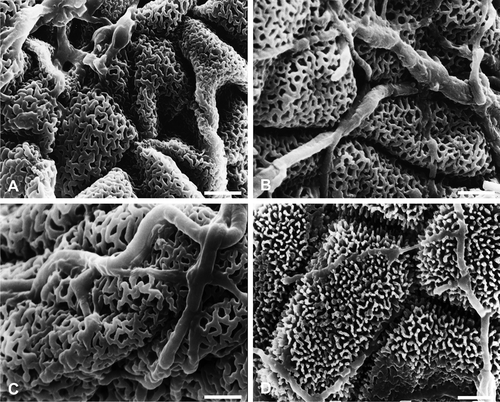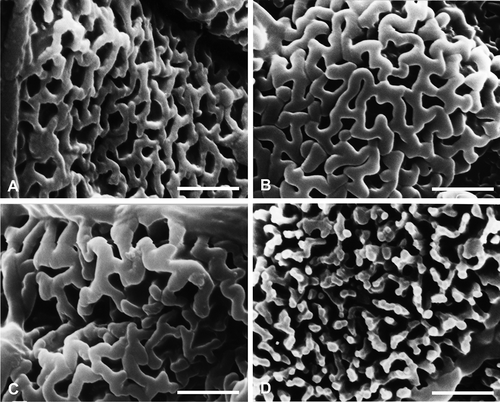Figures & data
Figure 1. Pollinium and massulae in Habenaria species. A. Pollinium of H. gourlieana; B. Loose massulae from a pollinium of H. paucifolia; C, D. Massulae of H. secunda: C. Radially arranged, triangular in outline massulae; D. Loose massulae. E, F. Massulae of H. bractescens: E. Part o a pollinium with a group of tabular massulae and elastoviscin threads; F. An isolated, tabular, oblong in outline massula. Scale bars – 0.35 mm (A); 110 μm (B, C); 70 μm (D, E); 30 μm (F).

Figure 4. Wall structure in Habenaria gourlieana. A, C. LM & B, D–F. TEM. A. Quadrangular external tetrad. B. Inner grains with exine without reticulum, and wide intine. C. Tetragonal and other types of tetrads. D. Pollen wall (detail), partial muri and pila with pollenkit inside and over. E. External grains of tetrads with reticulum-like exine, pollenkit present among baculae. F. Detail of wall in internal pollen grains with intine and granular exine. Scale bars – 10 μm (A, C); 5 μm (B, E); 0.5 μm (D, F).

Figure 2. Details of massulae and elastoviscine threads in Habenaria species. A–C. Ramified elastoviscin, apparently hollow threads in: A. H. paucifolia; B. H. bractescens (elastoviscin threads showing pores); C. H. secunda. D. Massula of H. gourlieana, viscous elastoviscin threads and pollenkit-like substance on massulae. Scale bars – 5 μm (A–D).

Figure 3. Types of walls in Habenaria species. A. Reticulum with rounded, thin, continuous muri of H. bractescens, and elastoviscin thread with pores. B, C. Coarse, thick muri in: B. H. paucifolia; C. H. secunda. D. Interrupted, broken, discontinuous muri, with granules over them, and isolated elements, possible pila in H. gourlieana. Scale bars – 3 μm.
